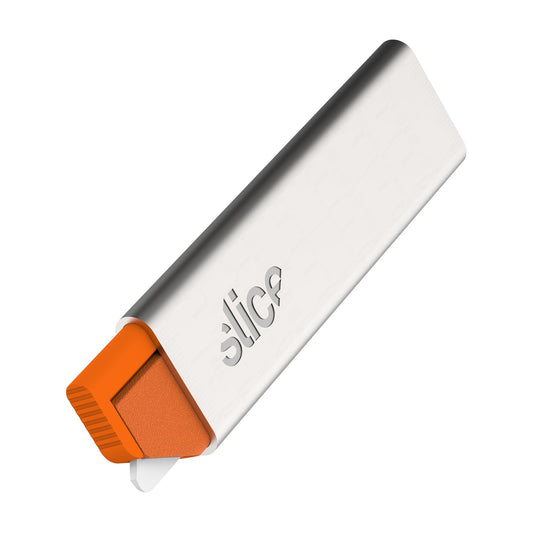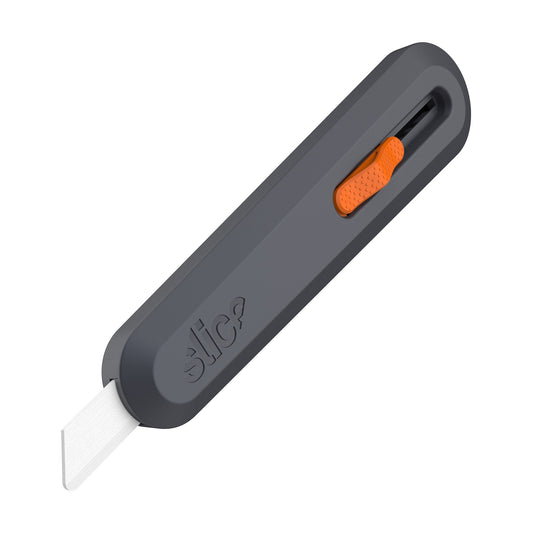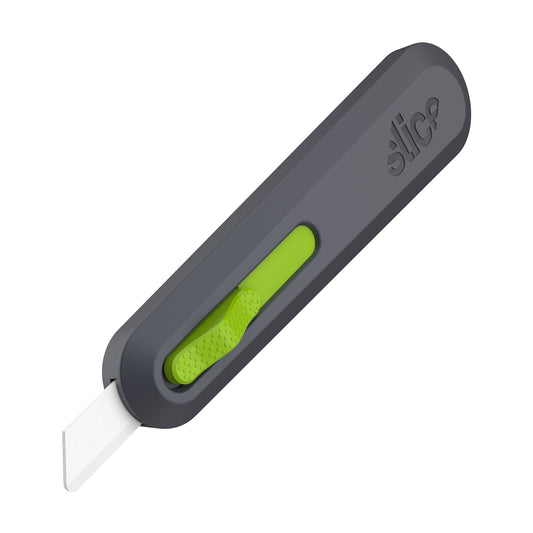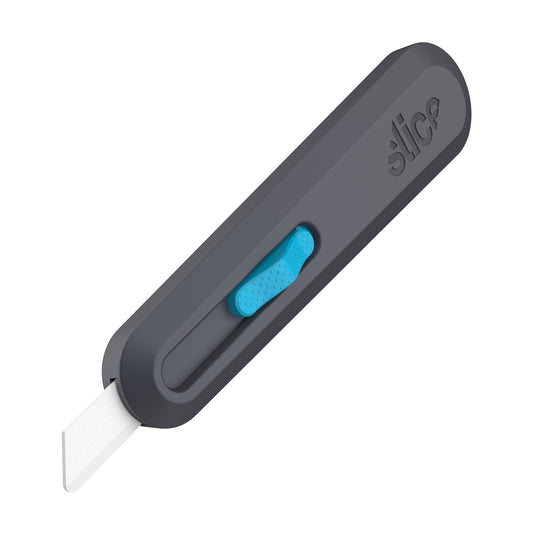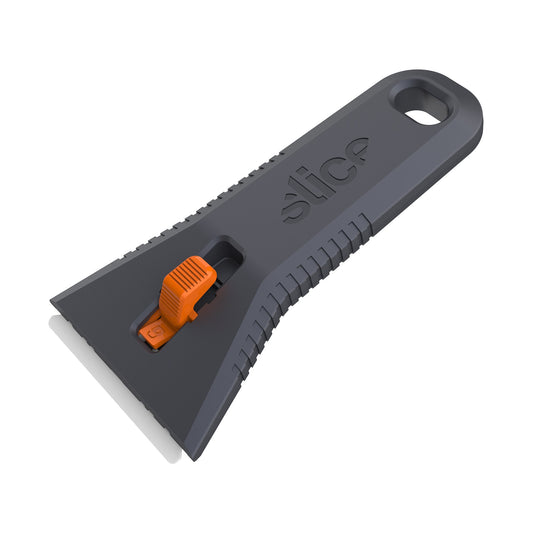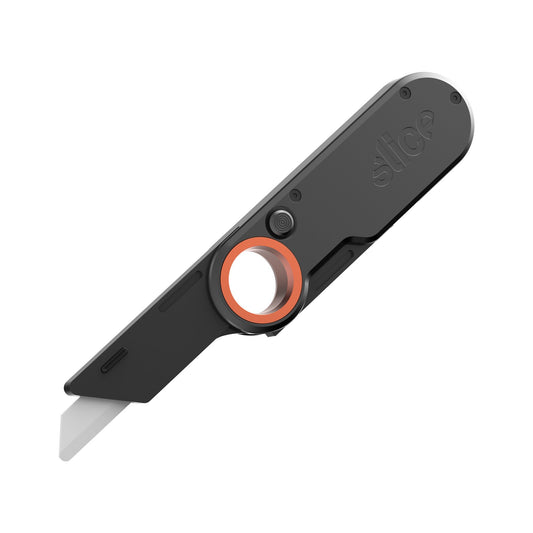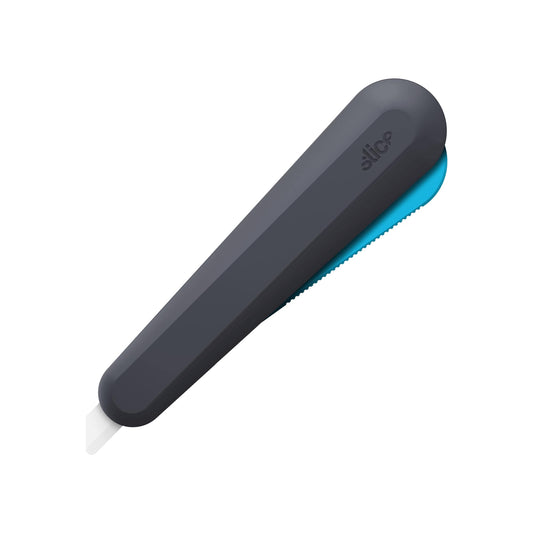SKU #10528
Cuttermesser-Klingen (spitz)
Die Slice 10528 Cuttermesser-Klingen sind spitz und ideal für Schnitte, die ein Durchstechen erfordern. Wie alle unsere Slice Keramik-Sicherheitsklingen sind unsere 10528 Klingen funkenfrei, unmagnetisch, chemisch neutral, hitzestabil bis 1600°C und rostfrei. Diese Klingen sind kompatibel mit allen Slice Cuttermesser-Modellen.
- Klingentyp: spitz, austauschbar
- 3 doppelseitige Klingen pro Packung
- Passende Werkzeuge: 10477, 10479, 10550, 10554, 10558, 10562, 10563, 10564, 10585, 10591, 10593
- Sicherheitsklinge, die 11x länger scharf bleibt
- Minimiertes Verletzungsrisiko, geringere Kosten
- Funkenfrei, nicht leitend, unmagnetisch
- Hitzestabil bis 1600°C
- Chemisch neutral, rostet nicht
- Werkzeugloser Klingentausch
- Weniger Klingenwechsel = weniger Verletzungen
- Art.-Nr. 10528
Produktdetails
Produktdetails
Cutting Depth:
Material: zirconium oxide
Dimensions: L x W x H
Weight: 0.026 kgKompatible Produkte
Overall product rating out of 5: 4.6
Based on 22 reviews
Write Review
Sort
Clear Filters
Order By
Newest First
Oldest First
Most Popular
Highest Rating
Breakdown
12
3
1
0
1
Product Reviews
Bought the retractable cutter for the wife, who cuts a lot of cardboard at work. The blade that came with the knife did not work near as well as the pointed style ceramic blades that I bought. Additionally, after we change the blades out, she has much more happy with what I can do.
Report
2 years ago
Found all slice utility items were fantastic. Love them. Have a job for each, from envelopes to carboard boxes. Thanks for ideal cutters.
Report
2 years ago
The Blades worked very nicely
Report
2 years ago
I love these pointed tips! I use them to open my vacuum food packages after thawing. They work so well at getting close to the food (Fish filets mostly) and zipping open the vac sealing. Super cool!! Sent a set to my son to use with his new “slice utility” knife.
Report
3 years ago
1
2
3
4
5
New content loaded
Videos
-
Cut Roof Membrane Safely With Slice
-
How to Cut Pallet Wrap and Banding
-
How to Cut Ceiling Tile: Safety First
-
How to Cut Corrugated Plastic Sheets Using Slice Tools
-
How to Cut Drywall Safely With Slice
-
How To Cut Mylar Stencils
-
Cutting Ram Board®
-
How to Cut Super Sacks® Easily and Safely
-
How To Cut Window Screen Using Slice Tools
-
The Correct Technique to Cut Plastic Banding
-
Blade Replacement for the Folding Utility Knife
-
Replacing Carton Cutter Blades
-
Blade Replacement on Slice Utility Scrapers
-
Blade Replacement for Slice Utility Knives
Ähnliche Produkte
FAQ - Häufige Fragen
Are Slice Ceramic Utility Knife Blades Safer?
Compared with standard blades (that’s steel or traditional ceramic), the answer is yes. When you search “how to change a utility knife blade”, you learn that the process is often dangerous. Overly sharp blades leave your hands vulnerable to injury.
Because we developed a proprietary finger-friendly edge for our ceramics, handling a Slice ceramic blade is less dangerous than handling a traditional ceramic or steel utility knife blade. Our manufacturing process creates an edge that effectively cuts material but is safe to the touch.
Slice utility knife replacement blades are made from hard zirconium oxide. That, along with our manufacturing process, is why our blades hold their edge, on average, 11.2 times longer than steel. This means you’ll be handling your blade much less often, which also reduces the chance of injuries.
Because we developed a proprietary finger-friendly edge for our ceramics, handling a Slice ceramic blade is less dangerous than handling a traditional ceramic or steel utility knife blade. Our manufacturing process creates an edge that effectively cuts material but is safe to the touch.
Slice utility knife replacement blades are made from hard zirconium oxide. That, along with our manufacturing process, is why our blades hold their edge, on average, 11.2 times longer than steel. This means you’ll be handling your blade much less often, which also reduces the chance of injuries.
Which Type of Utility Knife Blade Should I Use for the Job?
The best utility knife blades will depend on your application. For most cuts, our 10526 (rounded tip) blades will do the job. The rounded tip provides an added layer of safety against accidental puncture wounds. For some materials, though, a pointed tip is required. A pointed tip initiates a clean cut with a piercing action and is best used for materials like shrink wrap, laminating sheets and plastic banding.





